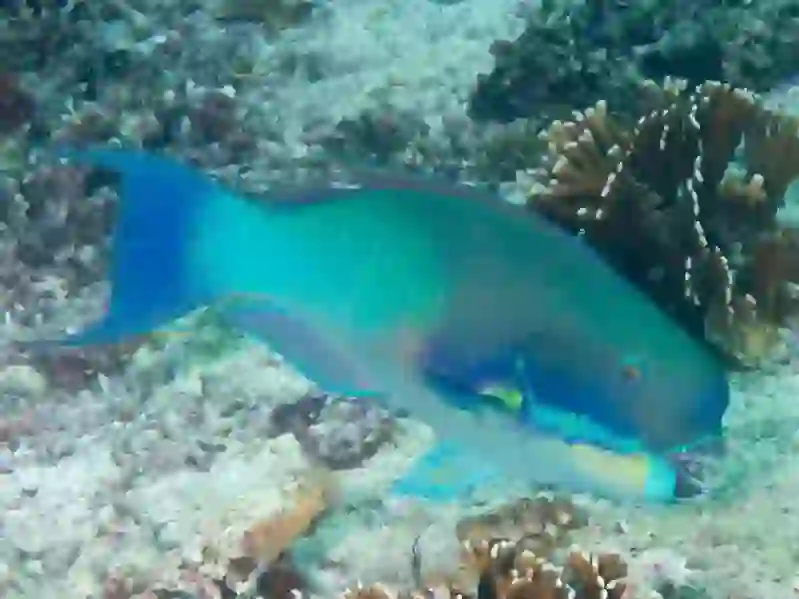
Sea Urchin
Sea Urchin
Sea Urchin
Sea urchins are often known as a high-end delicacy in sushi restaurants. Despite their black, spiky appearance and common use in cuisine, many people do not know much about their ecology. In this article, we will explore the mysterious ecology of sea urchins.
Sea Urchin Basic Infomation
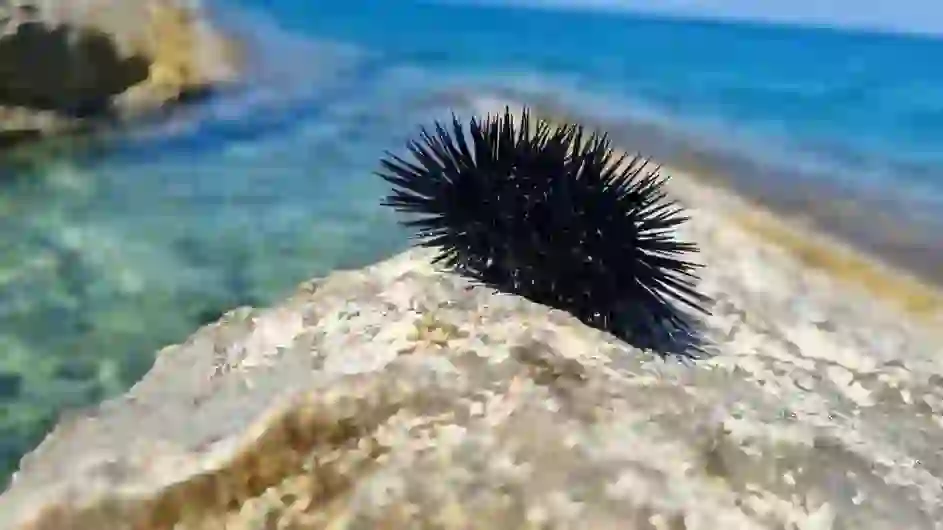
Phylum: Echinodermata, Class: Echinoidea
Size: 6–12 cm, Weight: 60–100 g
Sea urchins originated about 500 million years ago.
They are broadly divided into those that burrow in the sand and those found in rocky coastal areas, inhabiting a wide range from the shore to the deep sea.
They live in seas worldwide, and about 870 species have been identified.
Most species have spines, and some are poisonous.
The structure of a sea urchin's body is complex, composed of five parts, and depending on the species, some are hermaphroditic, which is one of their intriguing ecological features.
Like other echinoderms, such as starfish and sea cucumbers, sea urchins generally lack a heart and nervous system.
They are related to sea cucumbers and starfish.
It is said that about 80% of the world's catch of sea urchins is consumed in Japan, showing that sea urchins are particularly popular among Japanese people.
Around 150 species of sea urchins live in the waters near Japan, of which about 8 species are edible.
Sea Urchin Q&A

What is the origin of the name 'Sea Urchin'?
The origin of the word 'uni' (sea urchin in Japanese) is not well understood, but historically, characters like 宇爾 or 宇仁 were used.
There are three types of kanji used for sea urchin: '海胆', which means 'sea's liver' possibly due to its appearance or the fact that its flesh is eaten, and 'umi i', which when read leads to 'uni'.
Another kanji is '海栗', which likens the sea urchin’s spines to the burrs of chestnuts.
The most commonly seen kanji is '雲丹', where '雲' (cloud) symbolizes gathering, reflecting how the edible parts are clustered inside, and '丹' (red) represents its red hue in the sea.
The English name 'Sea urchin' translates to 'sea hedgehog' because of its spiky appearance.
Different types of sea urchins, like 'Bafun uni' and 'Murasaki uni', are named based on their appearance, such as the shape of their shells resembling horse dung and their purplish-black color, respectively.
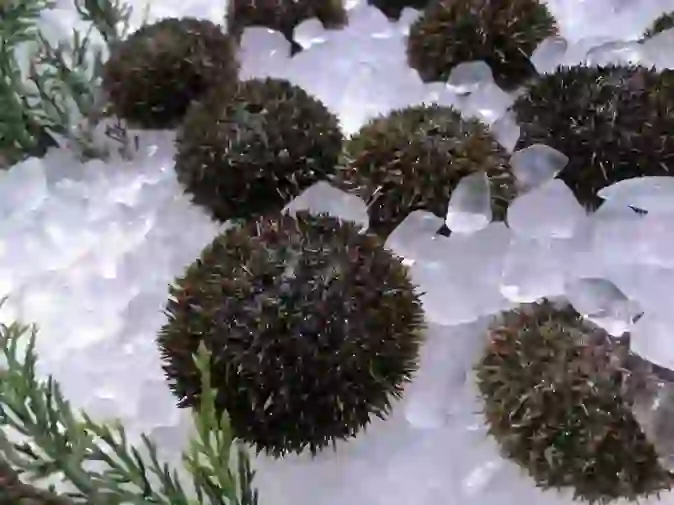
Why do sea urchins live there?
Sea urchins live either burrowed in sand or in rocky coastal areas. Those in coastal areas use their teeth and spines to burrow into soft rocks and live in holes they create.
They feed on algae and drifting debris around them.
Typically, creatures dig holes to protect themselves from predators, but sea urchins, being covered with spines, could technically protect themselves without hiding.
However, the spines on their oral side are shorter to aid in feeding, and this area becomes their vulnerability.
To protect this weak point, sea urchins dig holes and hide inside them.
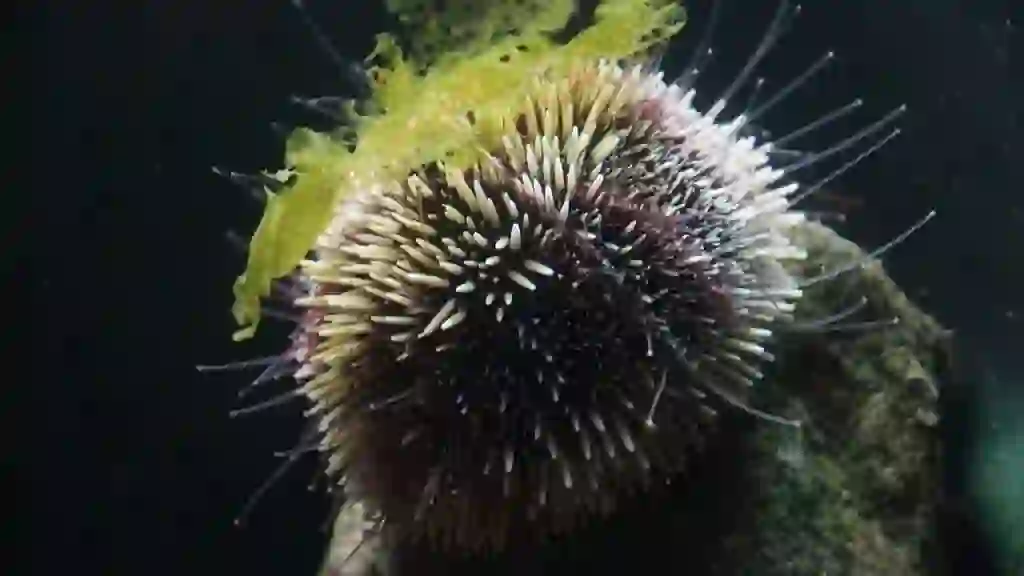
What do sea urchins eat?
Coastal sea urchins feed on algae, using their sharp teeth to graze.
They roam the rocky shores, eating algae as they move. Sand-dwelling sea urchins ingest large amounts of sand and extract organic material from it, expelling the sand through their anus.
While there are many types of algae in the coastal areas, sea urchins aren’t picky and will eat just about anything, which can lead to ecological imbalances if they overeat and deplete the algae.
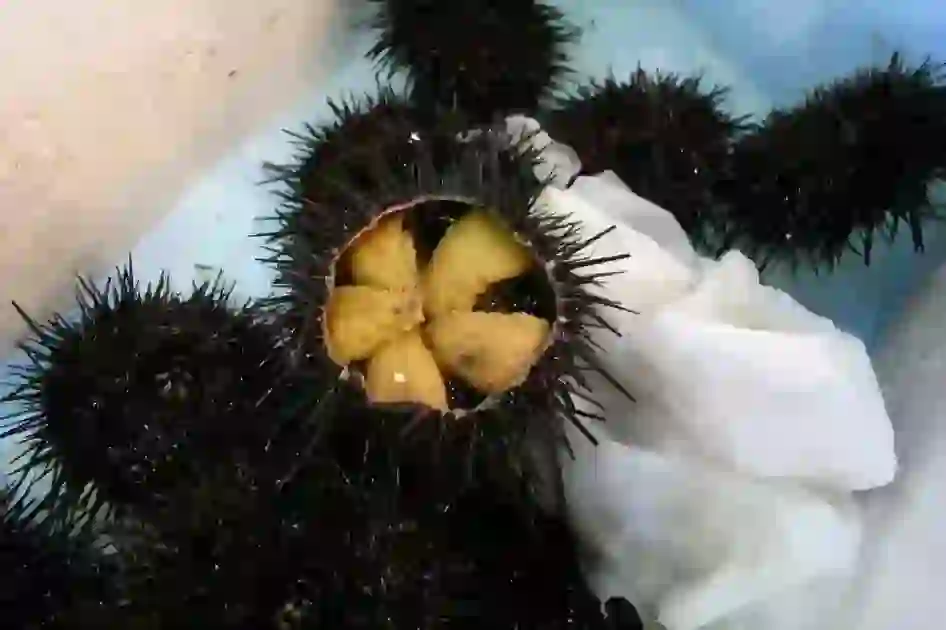
What is the structure of a sea urchin?
Like other echinoderms, sea urchins lack complex organs such as hearts and nerves.
Their spines are based on a structure called 'pentaradial symmetry', which is a pattern of fives – sea urchins typically have five ovaries and five jaws.
Each part has an area called an 'ambulacrum' and an 'interambulacrum', with structures such as tube feet, spines, and pedicellariae, which they use to move and feed.
The inside of the shell is mostly hollow, containing the internal organs.

Why do sea urchins have so many spines?
The spines of a sea urchin serve primarily for protection.
Since sea urchins attach themselves to rocks, their predators typically approach from above.
Covered almost entirely with spines, the upper spines protect against predators, while the lower ones help in locomotion.

How many spines does a sea urchin have?
A sea urchin has numerous spines. For instance, an adult 'Murasaki uni' (purple sea urchin) has about 2,400 to 2,800 spines in total.
The large number of spines is visually apparent, but quantifying them highlights how densely covered their bodies are.

Do sea urchin shells come in different shapes?
While it might seem that all sea urchins look the same due to their spiky appearance, they actually come in various shapes.
Sea urchins are divided into 'regular' and 'irregular' forms. Regular sea urchins have bilaterally symmetrical shells that are round when viewed from above.
Irregular forms, while bilaterally symmetrical, are asymmetrical in shape, having distinguishable fronts and backs.
All sea urchins used for food belong to the regular group.

Which part of the sea urchin do we eat?
In sushi and various dishes, what we consume are actually the gonads of sea urchins, which are difficult to distinguish between male and female in their immature stages.
During the reproductive season, testes tend to be whitish while ovaries are more yellow-brown, though they are still hard to differentiate.
There is no taste difference between the sexes.
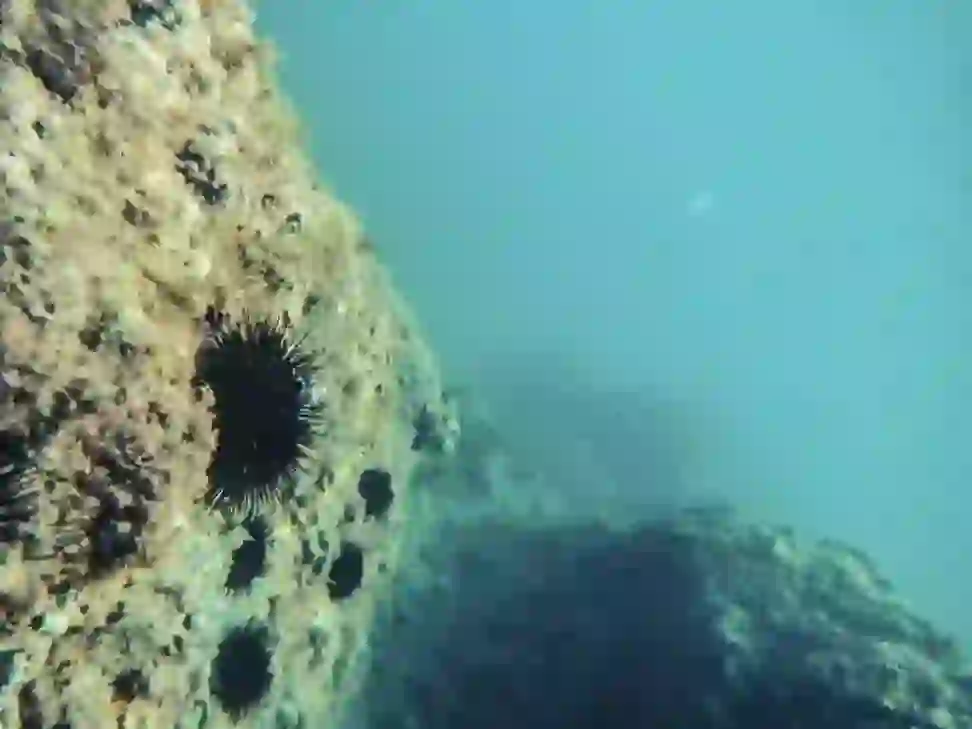
Is the male sea urchin tastier?
In the market, sea urchin gonads are mixed, but it is often said that the testes are tastier.
Products consisting only of male gonads are extremely expensive and handled mainly by high-end sushi restaurants.
The flavor of sea urchins also varies depending on the seaweed they consume, which is why those from areas like Rishiri Island in Hokkaido, known for its luxury kelp, are particularly prized and fetch high prices.
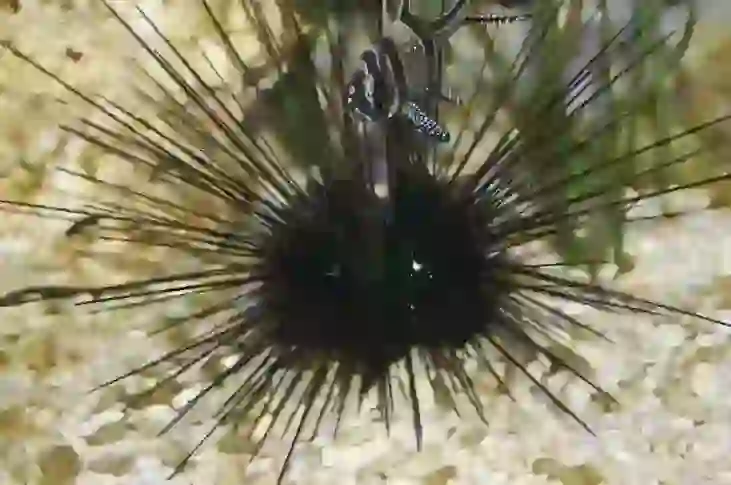
Can sea urchins walk?
Although sea urchins appear not to have legs or hands, they can move using their spines and tube feet.
While many sea-bottom dwellers are capable of only short-distance movements, sea urchins need to expand their living areas for survival.
Thus, during their larval stage, sea urchins live a planktonic existence, floating in the sea to spread over larger areas.
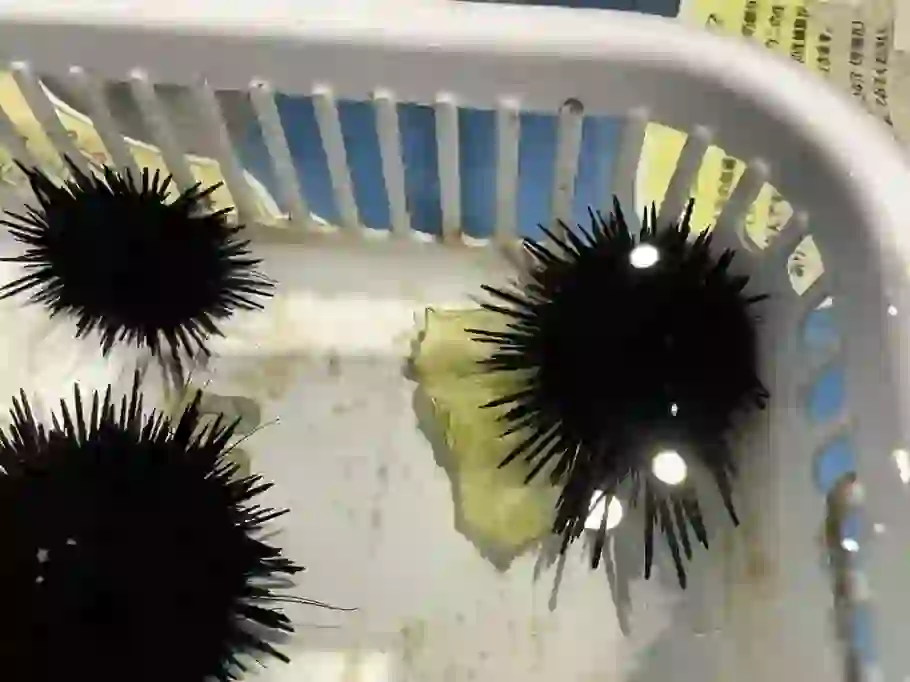
What shape are sea urchin burrows?
Sea urchin burrows are shaped like bowls.
Among marine creatures that create burrows, this bowl shape is rare and is formed very densely.

Are various creatures living inside sea urchins?
Many small organisms coexist inside sea urchin burrows.
This is because the sea urchins' spines protect them from larger fish.
Sea urchins can be seen as guards for small creatures, protecting them from external predators.
As for whether the spines of the sea urchins don't harm the creatures hiding in their burrows, the creatures that hide typically produce mucus, making it difficult for the spines to penetrate.
Marine creatures understand very well where it's safe for them to reside.
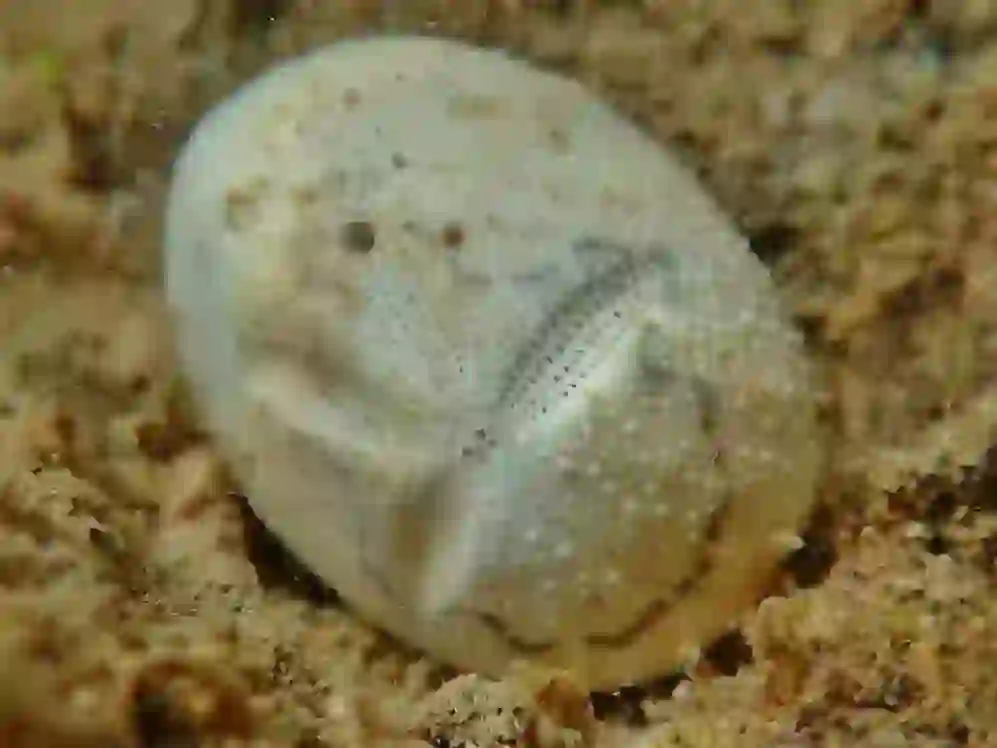
What happens when a sea urchin dies?
When a sea urchin dies, all its spines fall out, and the body decomposes, leaving only the skeleton.
However, this skeleton, called a 'sea urchin test', is very beautifully shaped.
There are various types, with beautiful colors, geometric patterns, and lace-like perforations, making them popular among collectors.

What happens to a sea urchin's burrow when it dies?
When a sea urchin dies, its burrow remains and is taken over by other sea urchins.
However, in tidal flats, the burrows collapse when the sea urchin dies, so only in rocky areas can the burrows be passed on to other sea urchins.
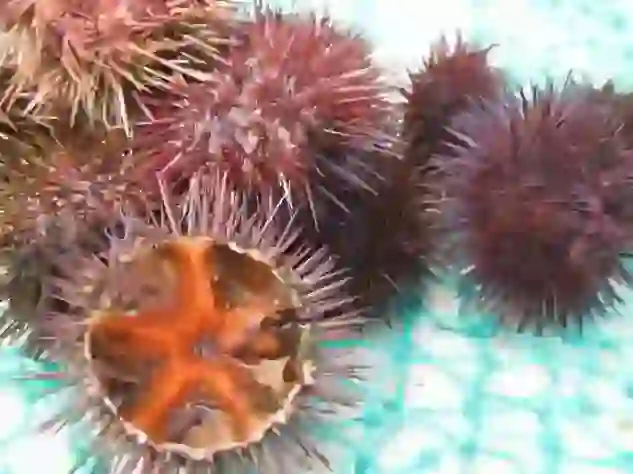
What is the lifespan of a sea urchin?
When sea urchins move, they extend their tube feet, which have suction cups at the tips, and stick to the rocks.
They also wedge themselves into rock crevices using their mouths, and in this way, sea urchins can live for over 200 years.
Furthermore, it has been found that their reproductive capability remains unchanged from that of a 10-year-old sea urchin even after they surpass 100 years of age.
The lifespan of the red sea urchin is about 7-8 years, while that of the northern purple sea urchin is about 14-15 years.
Sea urchins live quite a long time, don't they?

Who are the natural predators of sea urchins?
The natural predators of sea urchins, which have many spines, include parrotfish.
Sea urchins living in burrows rarely leave them.
However, parrotfish, which are predators of sea urchins, have sharp, strong jaws capable of crushing even the sea urchins' spines.
Additionally, lower sea temperatures can also cause sea urchin die-offs.

Would you like to become a part of the 'Animalbook.jp'?
Turn your knowledge into Q&A and share it with the world. ※Publication will be activated after purchase. Let's share information together!
Sea Urchin Type of List

・マツカサウニ
・フジザオウニ
・ボウズウニ
・ノコギリウニ
・バクダンウニ
・ベンテンウニ
・クロウニ
・コオロギウニ
・エゾバフンウニ
・キタムラサキウニ
・アカウニ
・タワシウニ
・ムラサキウニ
・パイプウニ
・マダラウニ
・タマゴウニ
・スカシカシパン
・ブンブクチャガマ
Information
Congratulations! You are the first commenter!

Create Your Favorite List!
Sea Urchin
Save the animals you love! Build your own list to quickly revisit your favorites later.

Would you like to leave a comment?
※Please note: This is for the purchase of rights to post comments within the article.
Find Your Favorites!
Our shop offers a unique and attractive selection of goods themed around various animals.
Sea Urchin References

- ・ウニハンドブック 株式会社文一総合出版 2019年10月29日初版第1版発行
- ・ウニと共生生物図鑑 株式会社創元社 2021年10月20日 第1版第1刷発行
- ・Wikipedia https://ja.wikipedia.org/wiki/ウニ
- ・いなせりブログ http://blog.inaseri.co.jp/blog/神経も心臓もない謎だらけのウニの生態とは/
- ・魚の食べ方探求 https://seafood-reference.com/uni/uni-seitai/entry1934.html
Sea Urchin Introduction of media used
出典:https://www.pexels.com/ja-jp/video/8823189/

出典:https://pixabay.com/images/id-6512657/

出典:https://pixabay.com/images/id-439795/

出典:https://pixabay.com/images/id-1239013/

出典:https://pixabay.com/images/id-498882/
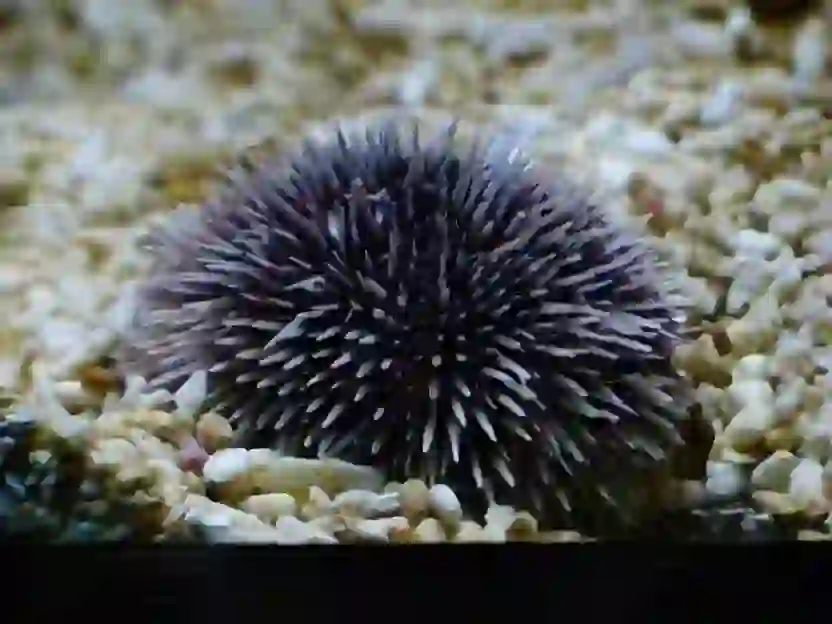
出典:https://pixabay.com/images/id-452921/

other
出典:https://commons.wikimedia.org/wiki/File:Brissus_latecarinatus_fasciole.jpg

other
出典:https://pixabay.com/images/id-19542/

other
出典:https://unsplash.com/photos/1mZxf4PIYU4
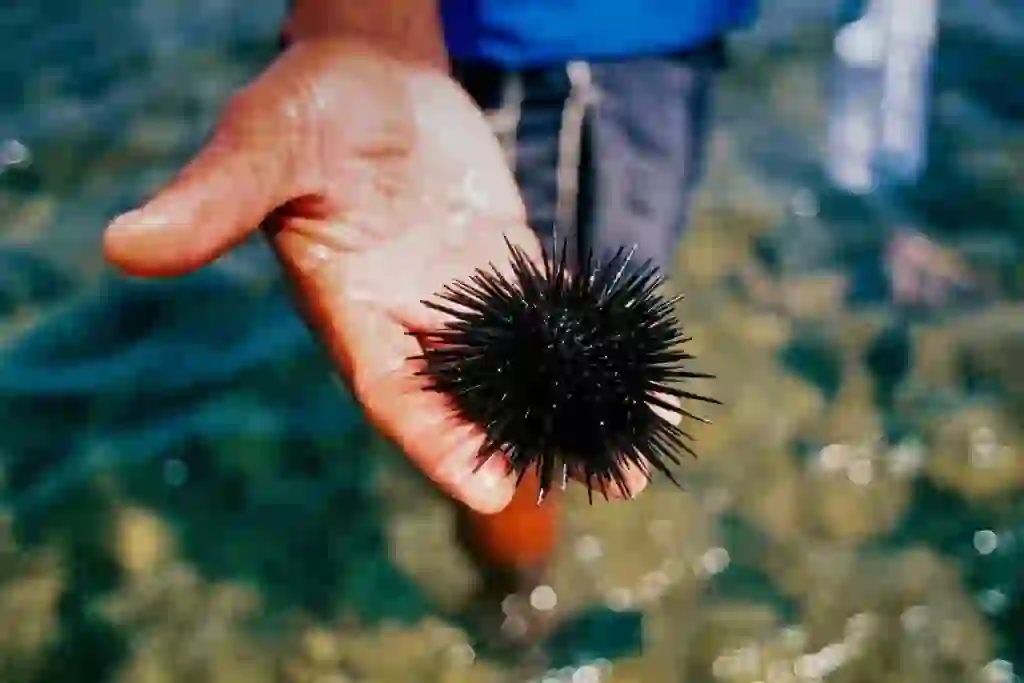
出典:https://unsplash.com/photos/EECt4dYb6k8

出典:https://commons.wikimedia.org/wiki/File:Sea_urchin_(29728247).jpg

出典:https://pixabay.com/images/id-603628/

other
出典:https://pixabay.com/images/id-696798/

Help Enrich Our Animalbook.jp with Your Media!
We are constantly looking to expand and enrich our Animalbook.jp with amazing photos and videos of animals. If you have any media that you'd like to share, please contribute and help us showcase the beauty and diversity of the animal kingdom. Your submissions will be credited and featured in our encyclopedia, reaching a wide audience of animal lovers.
















